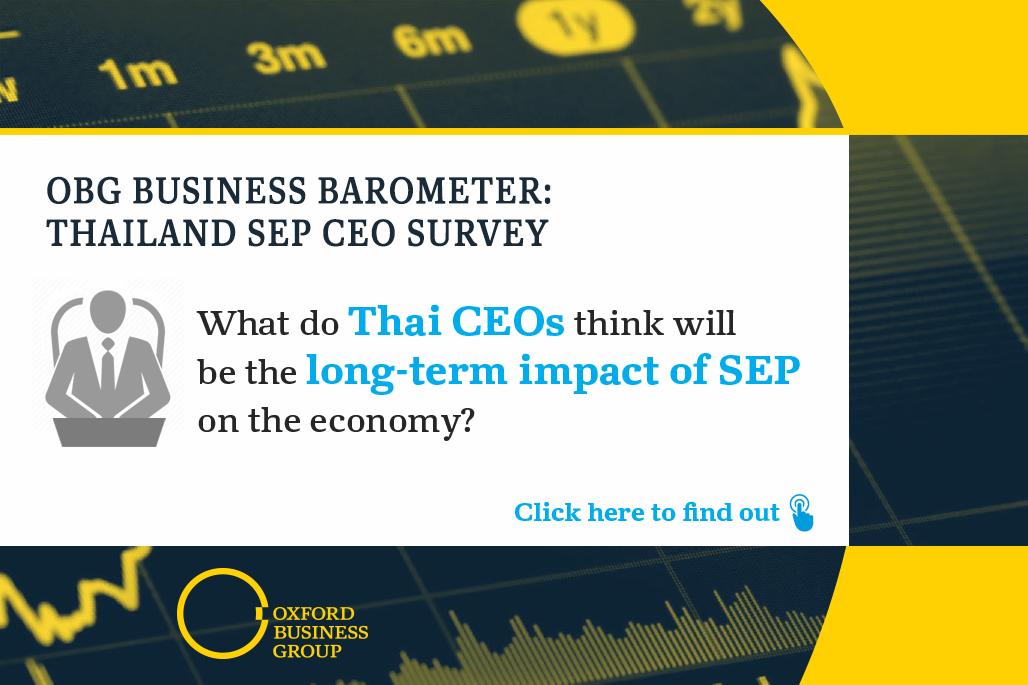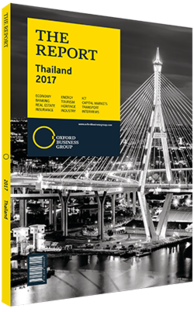Additional spending stimulates economic activity in Thailand
Thailand’s budgets for 2017 and 2018 will see a significant increase in spending and public investment as the government moves to boost economic growth through infrastructure development, expansion of value-added manufacturing and support for small businesses and the service economy. The 2017 budget forecasts a spending increase of over 20% following the approval of a supplementary spending increase in early 2017. Much of the new spending will be devoted to support mechanisms for value-added manufacturing activities under the country’s Cluster Policy (see overview), while the earlier budget focused on the digital economy, export promotion and tourism development. The 2018 budget will see spending rise again, with much of it expected to be used for public investment, further supporting forecasts for mid-term economic growth.
Strategy Over Tasks
In September 2016 the National Legislative Assembly (NLA) approved the 2017 budget bill for the fiscal year beginning in October 2016. Total spending was set at BT2.73trn ($76.9bn), equivalent to 18.4% of GDP. Current expenditures were forecast to decline by 1.2% to hit BT2.1trn ($59.2bn), comprising 76.9% of the total budget, while capital expenditure fell by 2.7% to BT548.87bn ($15.5bn). The budget deficit was set to hit BT390bn ($11bn) in 2017, the same level as in 2015 and 2016.
The government has identified 45 strategies to be targeted under seven categories, which include competitiveness, national security and international affairs, human quality, inequality, environment, public management and public services.
The competitiveness category shapes as being of most interest to the private sector as it includes multiple pro-business strategies, including: developing target industries; promoting small and medium-sized enterprises (SMEs); integrating a network of special economic zones (SEZs); improving infrastructure and logistics networks; integrating the digital economy; promoting research and development (R&D); boosting tourism revenues; promoting innovation and value addition in the manufacturing, service, trade and investment sectors; and improving productivity. This category was forecast to receive the largest proportion of public spending in the 2017 budget.
Competitiveness Funding
The total budget for the competitiveness category was set at BT323.7bn ($9.1bn), equivalent to 13.8% of public expenditure, or 2.6% of GDP. Of this, BT47m ($1.3m) was allocated to university entrepreneurship programmes, while BT23.9bn ($673.3m) was dedicated to the Board of Investment (BOI) for the promotion of Thai industrial part suppliers to the international market. In addition, the Ministry of Science and Technology was also given BT1.1bn ($30.9m) to support its start-up scheme.
SEZ development received several allocations, including BT25m ($704,000) to the Royal Thai Army for the provision of security services at the Kanchanaburi SEZ, and BT1.1bn ($30.9m) to the Customs Department for additional SEZ infrastructure development.
Logistics and infrastructure spending includes BT443.7m ($12.5m) for the construction of a new airport in Betong, as well as BT720m ($20.3m) for improvements at border airports. Promisingly, the State Railway of Thailand was allocated BT3.3bn ($92.9m) for projects including the construction of double-track lines, indicating forward momentum on ambitious national railway plans (see Transportation chapter).
Digital economy development spending included BT2bn ($56.3m) for the Ministry of Digital Economy and Society to upgrade telecoms infrastructure. A further BT33.7m ($950,000) was allocated to the Ministry of Commerce as part of efforts to boost SME adoption of digital business practices, while the Ministry of Interior received BT811.7m ($22.9m) in funding to launch a series of digital economy programmes.
Tourism
Tourism remains an important economic pillar for Thailand, accounting for 12% of the country’s economic output, with the government looking to boost international arrivals to 34m and generate BT1.78trn ($50.1bn) worth of revenues in 2017, up from 32.6m arrivals and BT1.64trn ($46.2bn) in revenues in 2016.
Tourism promotion activities rank high on the 2017 budget agenda, along with the construction of supporting infrastructure. In the 2017 budget the Department of Rural Roads was allocated BT1.08bn ($30.4m) for infrastructure upgrades to boost tourism and BT38.8m ($1.1m) for tourism personnel training, while the Department of National Parks, Wildlife and Plant Conservation received BT59m ($1.7m) for the promotion and support of ecotourism development.
Reception
Local media reported that the new budgeting method was met with a positive reception, despite previous government promises to run a balanced budget by 2017. The deficit was originally projected at 2.69% of GDP, compared to 2.90% in 2016. Government spending will be an important driver of GDP growth in 2017, while the budget deficit has been viewed as a necessary step amid efforts to push economic growth above the forecast rate of 3.5-4%.
Deficit growth is further supported by relatively low levels of public debt, with the IMF reporting that public sector debt as a percentage of GDP stood at 39.1% in 2011, rising to hit 43.6% in 2014 and 43.1% in 2015, before reaching a projected 43.7% in 2016.
Budget Augmentation
In December 2016 the government announced plans to boost spending by BT190bn ($5.4bn) for the 2017 fiscal year, which began in October 2016. The updated budget will see spending rise by between 21% and 22%, resulting in a BT580bn ($16.3bn) deficit, equivalent to 3.3% of GDP. Of this, an estimated BT115bn ($3.2bn) has been allocated for provincial cluster development, an increasingly important factor in supporting value-added export growth.
Adopted by the BOI in September 2015, the Cluster-based Special Economic Development Zones Policy, also known as the Cluster Policy, aims to boost support and cooperation for the industrial value chain through the development of concentrated, interconnected businesses and institutions operating in the same geographic area. Under the Cluster Policy, investors in provincial clusters benefit from government support in the form of human resource and technological assistance, infrastructure and logistics support, tax and non-tax incentives, financial support and pro-investment regulations (see Trade & Investment chapter).
Cluster Types
There are two types of clusters currently under development in Thailand: super clusters, and other targeted clusters. Super clusters focus on high-priority areas such as automotive and parts manufacturing, electrical appliances, electronics and telecommunication equipment, and eco-friendly chemicals and petrochemicals. Other targeted clusters focus on the labour-intensive industries of agro-processing and textiles and garment manufacturing. The remainder of the 2017 spending increase will be split among the Thailand Village Fund (BT15bn, $422.6m), improving industrial competitiveness (BT10bn, $281.7m), reserve funds (BT23bn, $647.9m) and treasury services (BT27bn, $760.6m). In January 2017 the National Legislative Assembly voted in favour of the supplementary budget bill, which will be partially funded by BT160bn ($4.5bn) in lending, likely through bond issuance.
Outlook For 2018
Current plans will see a larger spending increase in 2018, and in January 2017 the government unveiled plans for a BT450bn ($12.7bn) budget deficit for the 2018 fiscal year. Public investment benefits the most from a planned 23% spending increase, up slightly from an increase of 21-22% under the augmented 2017 budget. According to Somkid Jatusripitak, the deputy prime minister, the budget deficit will not impact public debt-to-GDP levels, which stood at 45% of GDP as of January 2017.
Although further details of the country’s 2018 budget have not yet been made public, HSBC reported in January 2017 that Thailand’s economic growth forecast for 2017 and 2018 is set to improve to 3.2% in both years, compared to previous estimates of 2.8% and 3%, respectively. The bank attributes this to ongoing public investment, rising private consumption and an anticipated increase in service exports, primarily tourism.
You have reached the limit of premium articles you can view for free.
Choose from the options below to purchase print or digital editions of our Reports. You can also purchase a website subscription giving you unlimited access to all of our Reports online for 12 months.
If you have already purchased this Report or have a website subscription, please login to continue.


